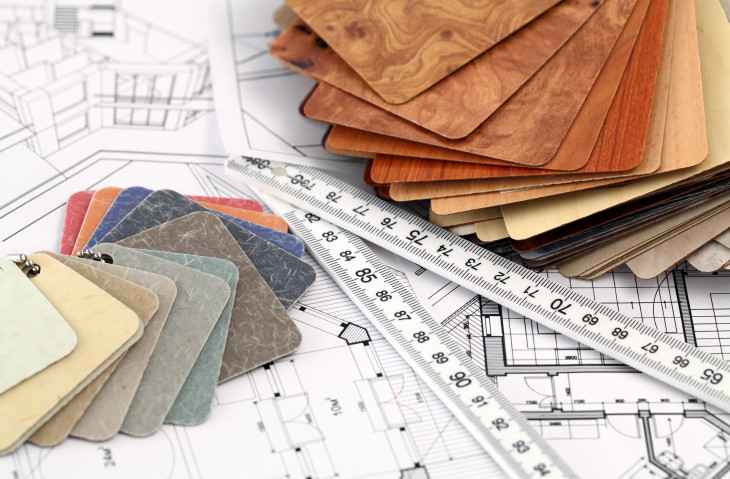It is vital that interior designers work closely with builders and architects to determine how to accurately design their interior space. These designers commonly require a bachelor's degree with a focus on interior design.
Education & Training
Typically, a bachelor's degree is required along with the following classes: CAD or computer-aided design, drawing and interior design. It is acceptable to have a bachelor's degree in any field; however interior design programs are available at the associate level, bachelor's level and master's degree level.
Approximately 300 postsecondary colleges, independent institutes and universities are accredited by the National Association of Schools of Art and Design. More than 150 professional level bachelor or master degree interior design programs are available through the Council for Interior Design Accreditation.
A variety of specialty design programs focusing on bath and kitchen designs are available through the National Kitchen and Bath Association. Programs are available in forty-five universities and colleges at the certificate, associate's or bachelor's degree level.
Applicants may have to submit examples and sketches of their artistic ability in order to gain admission into interior design programs.
Licenses, Certifications, and Registrations
In certain places, licensure varies. For example, in some areas, interior design work may only be provided by licensed designers. Whereas, in other locations, both unlicensed and licensed designers may conduct interior design work; however, only those who are officially licensed may use the title of interior designer. In other places, unlicensed and licensed designers may refer to themselves as interior designers and complete interior design work.
The National Council for Interior Design Qualification or the NCIDQ exam is required to be passed for individuals wishing to call themselves interior designers. Qualifications to take the NCIDQ exam include a combination of experience and education. Most applicants have a minimum of 2 years experience and a bachelor's degree in interior design.
Certain locations such as California require a different exam known as the CCIDC or California Council for Interior Design Certification. This process includes a mixture of experience and education.
Certification into an interior design specialty including baths and kitchens allows an interior designer to demonstrate their expertise in a certain specialty of interior design. These designers work to distinguish the kind of design work they prefer to work with by promoting their expertise. Trade associations and professional associations may offer a variety of certification that is independent from what is offered through the NCIDQ licensing exam.
Skills and Qualities that will Help
Artistic ability: Interior designers utilize their style sense to create designs that are aesthetically pleasing.
Creativity: It is important for interior designers to be selective with fabrics and furnishing when developing unique spaces to serve the needs of the client and fit into their lifestyle.
Detail oriented: It is necessary that interior designers are precise in making drawings and measuring interiors correctly to ensure that furnishings and furniture will fit properly and enhance the environment as planned.
Interpersonal skills: It is important for interior designers to effectively communicate with individuals and clients. A large portion of their time is spent on developing new client relationships and collaborating with engineers, designers and general contractors to implement the finishing touches on their projects.
Problem-solving skills: Challenges need to be constantly addressed by interior designers including: budget changes, construction delays and the sudden unavailability of predetermined items. Keeping the project running within budget and on time are vital components to success.
Visualization: A strong sense of visual awareness and proportion is necessary for interior designers to visualize how specific design pieces will fit together to create the ideal interior.









